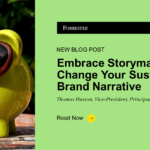
Weird or not, Elon Musk’s X may have something to do with the shift. Users are leaving X, the social media platform formerly known as Twitter, in droves. In the year Musk has been in charge, he’s driven away two company leaders who oversaw content moderation, repeatedly overhauled the blue check mark verification system, and removed headlines from news articles shared on the platform. The result is a poorly moderated platform rife with violence, disinformation, or outright propaganda.
As many extremely online tweeters look for their next platform, X’s loss could be LinkedIn’s great gain. Vivek Wadhwa and Alex Salkever, who frequently contribute articles about technology to Fortune, argued in an August commentary that LinkedIn has the potential to emerge as “an even more captivating destination for enthusiasts of up-to-the-minute news and insights” and could “seamlessly blend into both a global business-centric social graph and a comprehensive knowledge repository.”
LinkedIn’s window of opportunity is now. With an estimated 1 million users fleeing X in the week after Musk finalized his acquisition, according to the MIT Technology Review, X could lose as many as 32 million users by 2024, according to estimates by Insider Intelligence, a market research agency that tracks social media and advertising.
However, the influx of new users, many of whom adopt a casual online presence, threatens the professional atmosphere for which LinkedIn is known.
‘TMI,’ LinkedIn
LinkedIn is primarily used to share professional updates, insights, and expertise, and, of course, to job-hunt. But some users are toeing—or in some cases, outright crossing—the line of professionalism by sharing personal life updates with their networks.
The Instagram account @bestoflinkedin has gained over 40,000 followers by posting screenshots of LinkedIn users doing just that—from justifying sleeping in a car and the lessons a Trader Joe’s grocery run taught their kid, to more explicit and shocking revelations about the posters’ bodily functions or intimate family relationships.
Their reasoning? Being honest about challenges, no matter how personal, leads to professional success, write these vanguards of the bring-your-whole-self-to-work movement. One LinkedIn user concluded a post about his anxiety using public restrooms on a motivational note: “There’s no perfect time to do anything, so start today!” he wrote. But it’s uncertain there’s ever a perfect time to tell your work network about your bodily functions—everyone knows that posts to the internet last forever, and the stakes are even higher when colleagues, clients, and future employers are reading them.
LinkedIn is wrestling with other issues, too, like sexual harassment. While it’s a problem across the internet, women told Fortune this summer that the pandemic seemed to supercharge the amount of harassing, explicit, or romantic messages they got on the platform. Nine in 10 women say they’ve received a romantic advance or inappropriate message on LinkedIn at least once, according to a July survey of over 1,000 women who actively use the platform.
Then there are the trolls—users, often hiding behind the cover of anonymity, who deliberately try to offend others through insulting comments and messages. One Fortune reporter recently received a direct message from a stranger on LinkedIn. The user, who had no profile picture and only one connection, called the reporter a “white privileged bougie piece of crap” in response to an article the reporter had written and shared on the site. And while internet trolls are by no means new either, there’s a jarring feeling about being trolled on a platform ostensibly for professionals.
LinkedIn previously told Fortune that unwanted romantic advances and harassment violate its rules and asked recipients of unwanted messages to report the instances.
LinkedIn’s evolution
As with any social media platform, more users means more discourse and absurdity. LinkedIn’s evolution may just be an inevitable part of its rapid growth.
LinkedIn launched 20 years ago in 2003. The company hit 100 million users by 2011, the year it went public; tech giant Microsoft acquired it five years later in a $26.2 billion deal. Now, roughly 950 million people across more than 200 countries use the platform.
The platform is becoming more popular among its existing users, too. LinkedIn doesn’t report its number of daily or monthly average users, but the company told Bloomberg that its users shared 41% more content in the spring of this year than they did in the same period in 2021.
To supplement increased activity, LinkedIn has expanded the platform’s capabilities in recent years by adding tools like newsletters, a podcast network, and audio events. It’s also long fostered those it considers influencers, or “LinkedInfluencers,” through the training program it established in 2011. Still, it’s trying to keep the vibe professional for now. Product director of search Alice Xiong wrote in a June post that “LinkedIn was not designed for virality.”
“It’s about reaching the right professionals with the right information or topics that they care about and that can help in their careers,” she wrote.
Maybe it’s the “TMI” posts, or the sexual harassment and trollish-behavior, but despite its undeniably growing prominence, LinkedIn doesn’t feel like LinkedIn anymore. Whether that’s a good thing remains to be seen.








